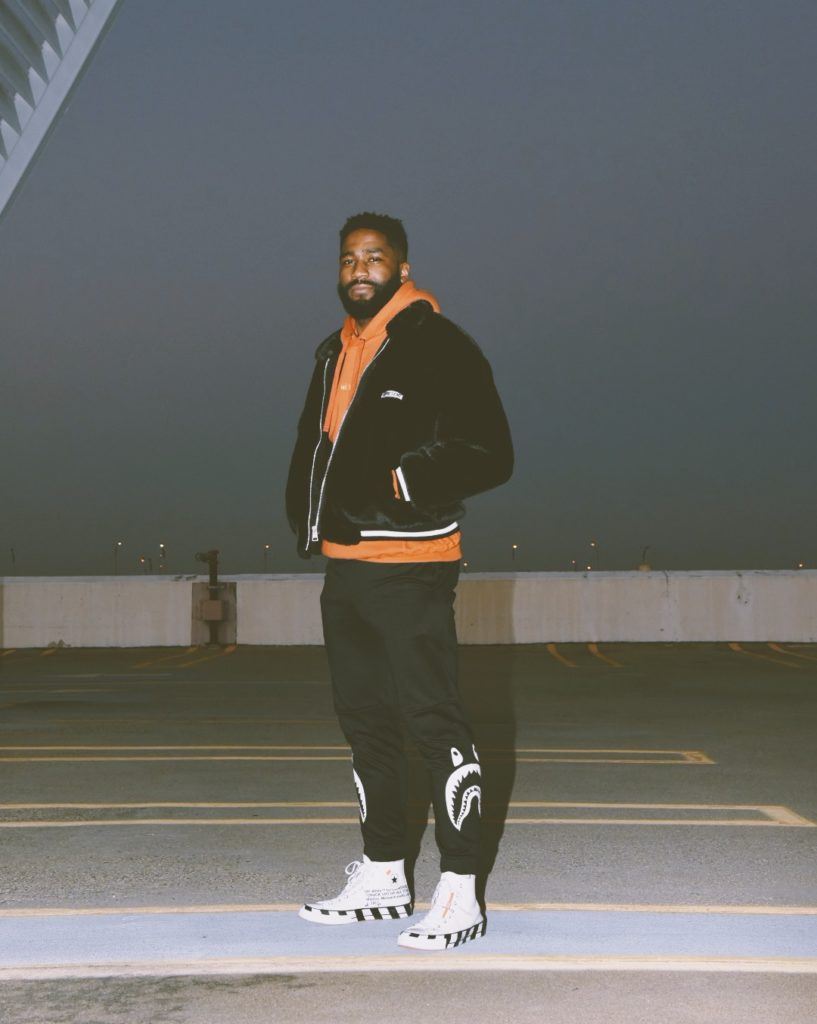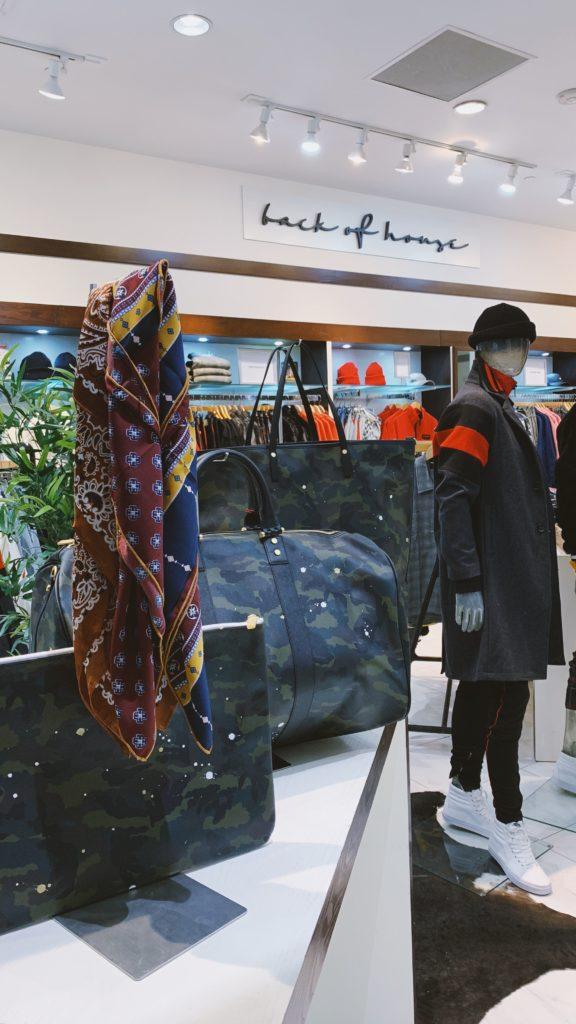Machine Learning: Innovate Your Way to an Unproductive Majority

Back of House USA was founded on November 22, 2017. Rodney McLeod Jr. of the Super Bowl Champion Philadelphia Eagles tapped Sir Kevin James, designer and owner of ShopCore (4 locations in DC Metropolitan Area) and his best friend Jonathan Mason, a Wall Streeter and hedge fund founder, to create a progressive men’s streetwear store that provides high-fashion to an area skipped over by brands for places like LA and NYC. BOH struggles with inventory management and digital sales. BOH is located in Pentagon City Mall, a Simon Mall next to the Pentagon, but the founders know that Brick-and-Mortar retail stores are failing generally. The founders want to explore the options of machine learning to assuage inventory concerns and promote digital sales. Exploring the journey of CEO Katrina Lake (MBA ’11), one can see how BOH must work hard to obtain the scale necessary to support this endeavor.
Summary
Back of House USA was founded on November 22, 2017. Rodney McLeod Jr. of the Super Bowl Champion Philadelphia Eagles tapped Sir Kevin James, designer and owner of ShopCore (4 locations in DC Metropolitan Area) and his best friend Jonathan Mason, a Wall Streeter and hedge fund founder, to create a progressive men’s streetwear store that provides high-fashion to an area skipped over by brands for places like LA and NYC. BOH struggles with inventory management and digital sales. BOH is located in Pentagon City Mall, a Simon Mall next to the Pentagon, but the founders know that Brick-and-Mortar retail stores are failing generally. The founders want to explore the options of machine learning to assuage inventory concerns and promote digital sales. Exploring the journey of CEO Katrina Lake (MBA ’11), one can see how BOH must work hard to obtain the scale necessary to support this endeavor.


Highlights
- Machine learning is an outlet that, at scale, can revolutionize the order flow of a small retailer by streamlining buying decisions, fortifying trend forecasting, and eventually cutting down on costs.
- The founders are working to identify top talent at HBS to create a strategy for machine learning. One founder invested and worked in a data visualization start-up in DC as well as a Real Estate, machine learning start-up in Durham, NC. In the long run, the company wants to pivot to an influencer/brand centric recommendation engine. Many people don’t actually care what they wear—they only care what their favorite celebrity/influencer and friends wear. We’ll deliver those recommendations through reality-priced brands (Fear of God sells $1,000 T-shirts at times. Kanye West would wear them, but the price point is simply unattainable to John Smith).
- The company needs to establish the cost-benefit analysis of machine learning. There is a tipping point and a ceiling that need to be addressed with machine learning pursuits. The amount of data that is necessary to be successful is astronomical. Also, one must truly understand the personnel needs to create an engine like this. Funding and cost structure will be paramount for BOH.
- The open question for the company is: As we grind towards the efficiency of automation, what is the responsibility of corporations to their employees, the industry, and the communities in which they exist in. BOH has piloted BOHCares, and their mission is very much community focused. Corporations give the empty promise of “jobs coming that we can’t foresee”, but BOH will not hide behind that. They will truly address the corporate responsibility of corporations in the world of Netflix and Stichfix.
Jonathan Mason personal photo library.
BOH is a small clothing retailer in Pentagon City Mall. The founders want to solve inventory management and digital sales issues. The founders have been following the rise of Katherine Lake’s Stitchfix for some time. Jonathan Mason worked with a few Stichfix employees at First.io, a machine learning start-up (also worked with design/machine learning wiz Glenn Vanderburg), but Mason really had to understand SFIX as he participated in the IPO for his hedge-fund. Mason’s fund was allocated shares in the IPO by JPMorgan. This relationship has served as a wealth of knowledge for BOH.
BOH wants to mimic the approach of how to “differentiate ourselves through personalization” by making “unique and personal selections by combining data and machine learning with expert judgement” (Lake 2018). The founders understand the game plan very well based on their experience; however, they are reticent of the high capital intensity and the sheer need for an astronomical amount of data for the algorithm to be useful. It is hard to know—How good is the actual underlying technology? Mason fears that, at a previous start-up he worked at, the machine learning engine was a black box and the fact that everyone had a PHD was an answer for most probing questions.
The market did not react well to SFIX initially. This brought about claims of SFIX being another Theranos, a blood drawing scam that raised millions. The market has since changed its tune and SFIX trades $10 above its initial pricing. Lake states, “Our algorithm helps us see these trends earlier and more accurately, so we can stock inventory more efficiently and be ready for spikes in demand” (Lake 2018). This is at the heart of BOH’s strategy. BOH wants to create a model that promotes fashion tourism around the globe. BOH will pair expert stylists globally, extensive influencer analysis, and machine learning based trend forecasting. Customers will be given recommendations based on their friend’s preferences and the preferences of their favorite influencers—the expert stylists will then scour the globe for cheaper, undiscovered brands that fit the customers need.
The lasting question in conclusion the BOH team must analyze is: If this model became ubiquitous, what jobs arise for retail workers in the future?
Word Count: 798
Lake. Stitch Fix’s CEO on selling personal style to the mass market (Links to an external site.)Links to an external site.. Harvard Business Review 96, no. 3 (May/June 2018): 35-40.
Jonathan Mason Personal Photo Library





The concept as a whole is very interesting and is reminiscent of GAP’s attempts to predict future trends in fashion. The author does ask an important question about the viability of ML tools for smaller stage companies. I do, however, think the author needs to clarify BOH’s goals further to truly ask the right questions about the possibility of ML helping the business. The goal of “forecasting trends” is likely too broad to be of any use to a programmer building their model. Figuring out what specific types of trends, what data sets are possible to mine from social media and other sources, and the feasibility of extrapolation vs interpolation from previous data are all key to refining BOH’s outcomes.
It was fascinating to learn more about BOH and the implications of machine learning being applied to innovate against the struggles that traditional mall-based retail faces today. For corporate social responsibility in the age of machine learning (and the future of work, more broadly), it seems like the proposed strategy to leverage a global stylist base, influencer analysis and trend forecasting will positively free up personnel bandwidth to engage customers, continue advancing product design, etc. This will enable management and employees to perform uniquely-skilled, brand-differentiating tasks which cannot be replaced.
Thank you for sharing the story of Back of House. It is a fascinating idea and brand, and the current positioning of the company is interesting in the context of machine learning. Your article brings up the pivotal challenges with machine learning: What’s the value? Is it a worthwhile investment for a business? In terms of a clothing company, if it’s true that people care more about their influencer’s clothing than their own style, the benefit of machine learning seems clear. It can highlight purchasing trends and preferences and make recommendations through ads to support future purchases. I am not convinced that machine learning removes the need for a designer though, especially in the progressive, high-fashion sector in which Back of House competes.
A little self-promotional, but super-interesting read, Jon 🙂
What stands out to me is that you’re one of the few who acknowledge the capital-intensive nature of machine learning on top of the in-house labor and technical requirement. I believe that certain aspects of fashion can be predicted via tracking cycles (eg. suit cuts today resemble those of the late 1960’s), but I believe that human judgment is necessary on subjective matters like style. Touting machine learning as a planning tool might work well once you’ve picked up steam, but in early days it can be difficult to justify the cost. What are BOH’s methods for sourcing / buying consumer data? With a more liquid market of credit card purchase data, online viewership, etc, is that something that benefits the world (especially in terms of CSR like you mention) or harm it?
Captivating story to Back of House and a fascinating concept. Machine learning, at its core, works best in situations where historical and live data provides for largely accurate predictions of patterns. I would be curious to see how well machine learning can predict fashion–is historical data relevant in predicting future trends? Does ‘history repeats itself’ in the world of fashion? If machine learning truly works in fashion, it can be used to predict quantity of order placements on items using machine learning to predict expected popularity. At the same time, given the significance of celebrity influencers as the article points out, one may proceed with an algorithm that counts the number of times a set of celebrities is photographed wearing a particular newly released item, in order to take advantage of the time lag between the time x when a celebrity is seen wearing an item and time y when a mass of consumers seek to purchase that item.
Congrats to the team at BOH for addressing a market gap in the fashion space! You are right in your concerns about the potential ubiquity of applying Machine Learning to customer-oriented business. Data will remain king for centuries to come, and many more businesses and industries will utilize this data in making decisions and reducing costs. Thus leading to the bigger concern of the validity of this data. In BOH’s industry, you are right in considering the vast amount of data required to deduce any reasonable patterns in behavior; however, more and more businesses are taking the easier route and buying this data from third parties. This data, although easier to access, might be laced with all kinds of white noise and impurities. In this scenario, BOH will have to weigh the costs/benefits of gathering its own data versus accessing an existing pool.
Thanks so much for this post, Jon, really enjoyed it! Great point about the capital intensive investment that machine learning brings to the table. I am not convinced based on this post that the value of ML for Back of House would really increase sales drastically. It seems to me that it is a big question mark if ML could have a large impact on a brick and mortar fashion store. Because of that question, and the intensive costs, I am not sure it is worth the investment at this moment. Would be interested to hear which way the founders go on this!